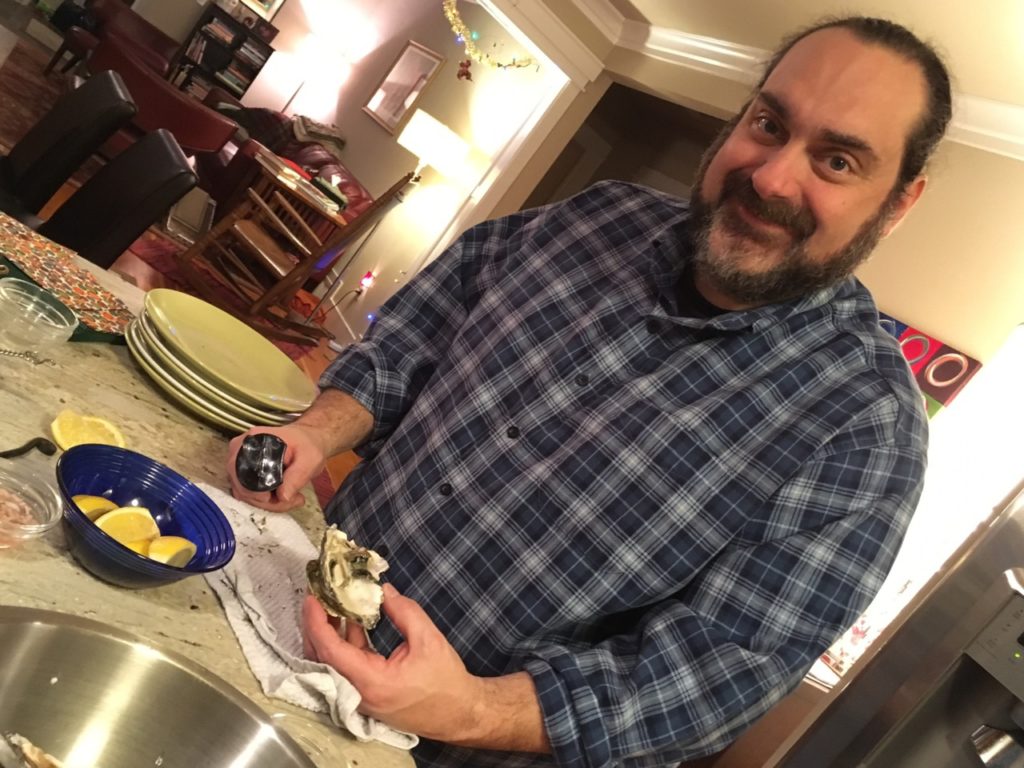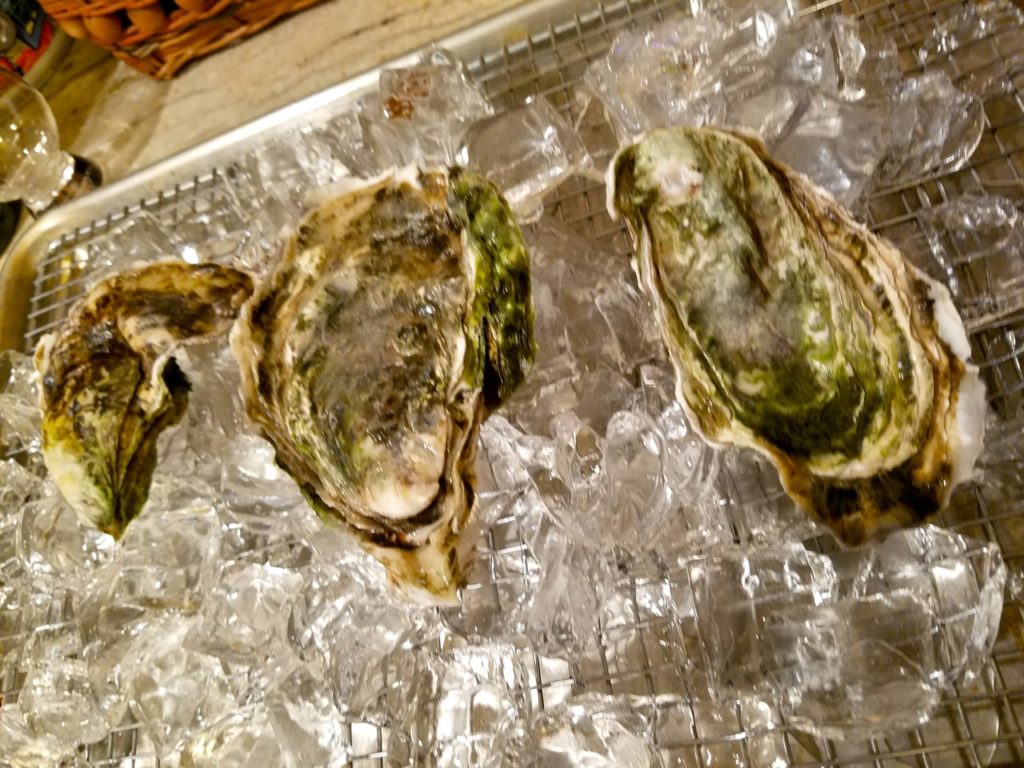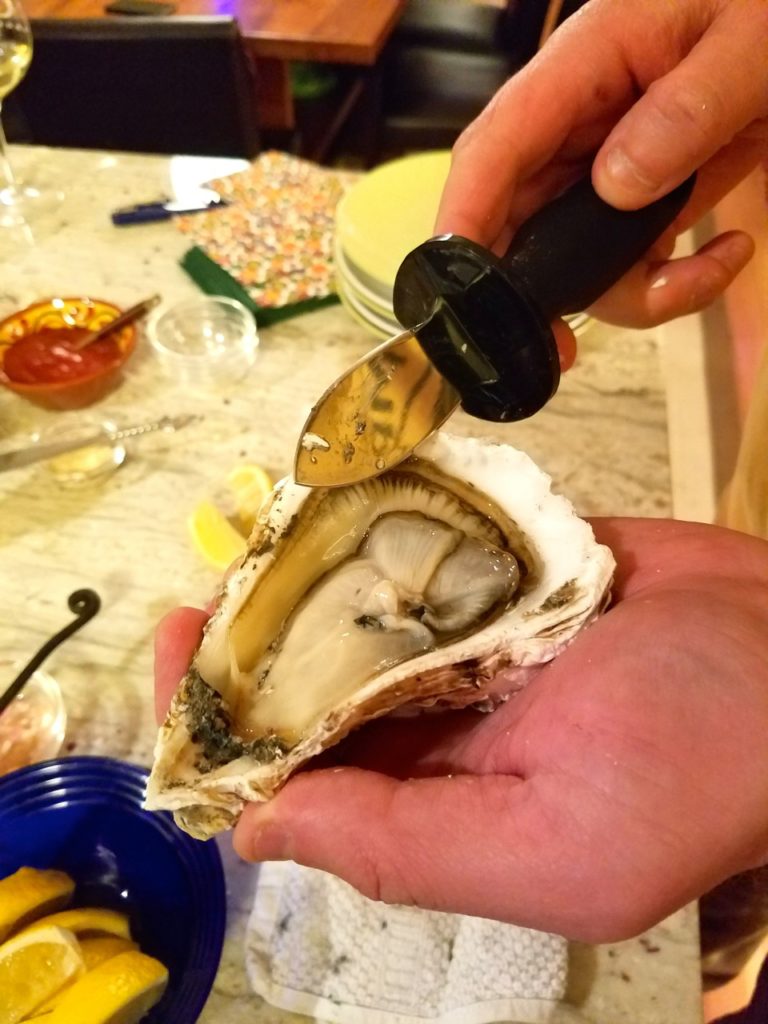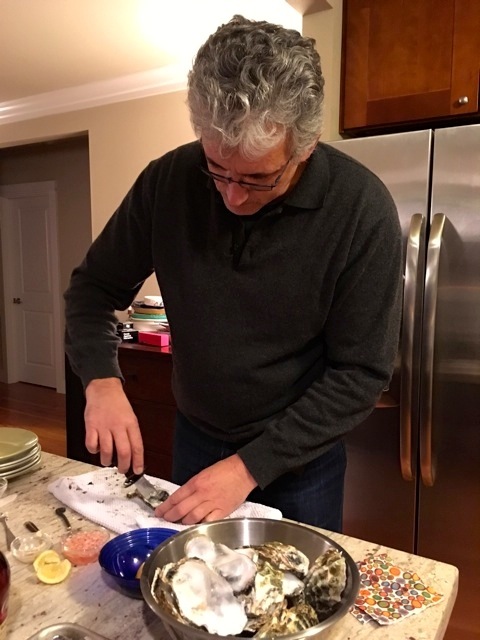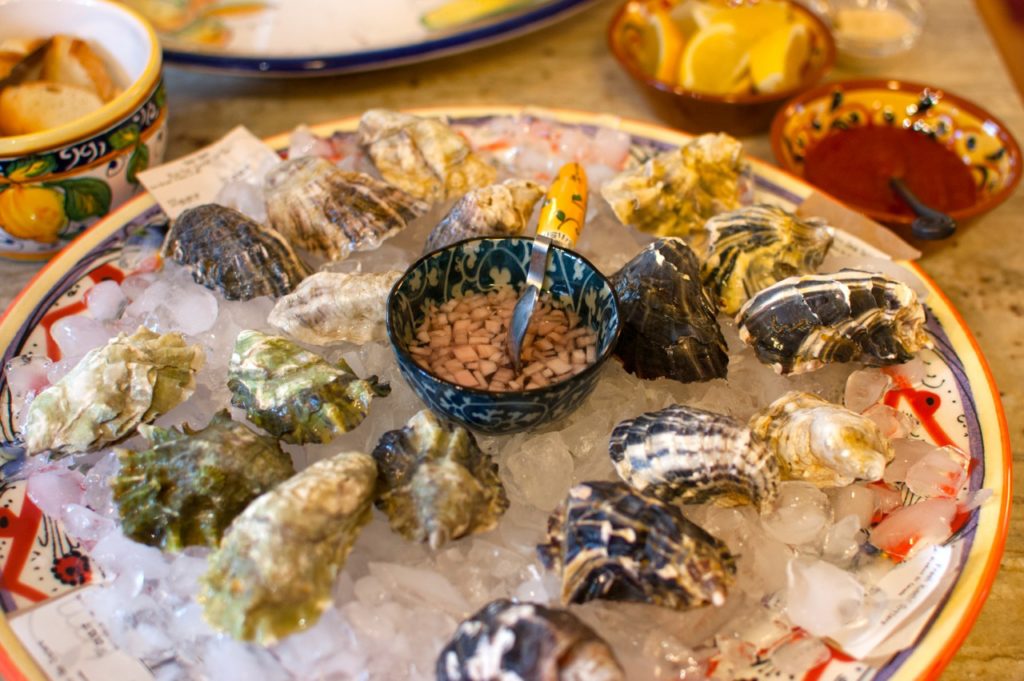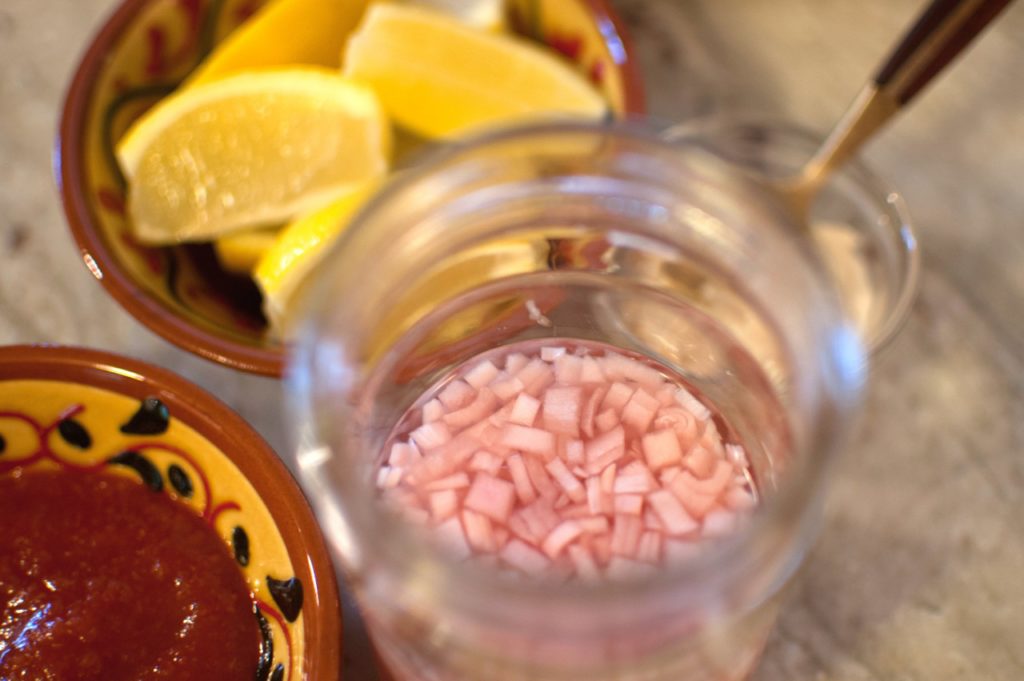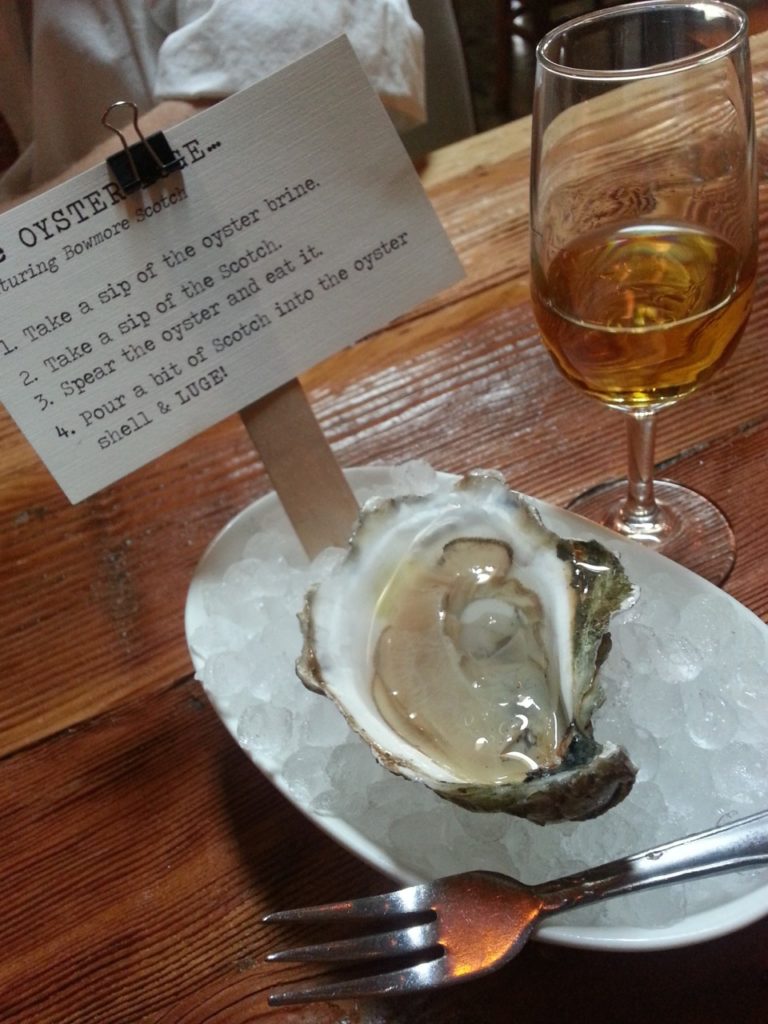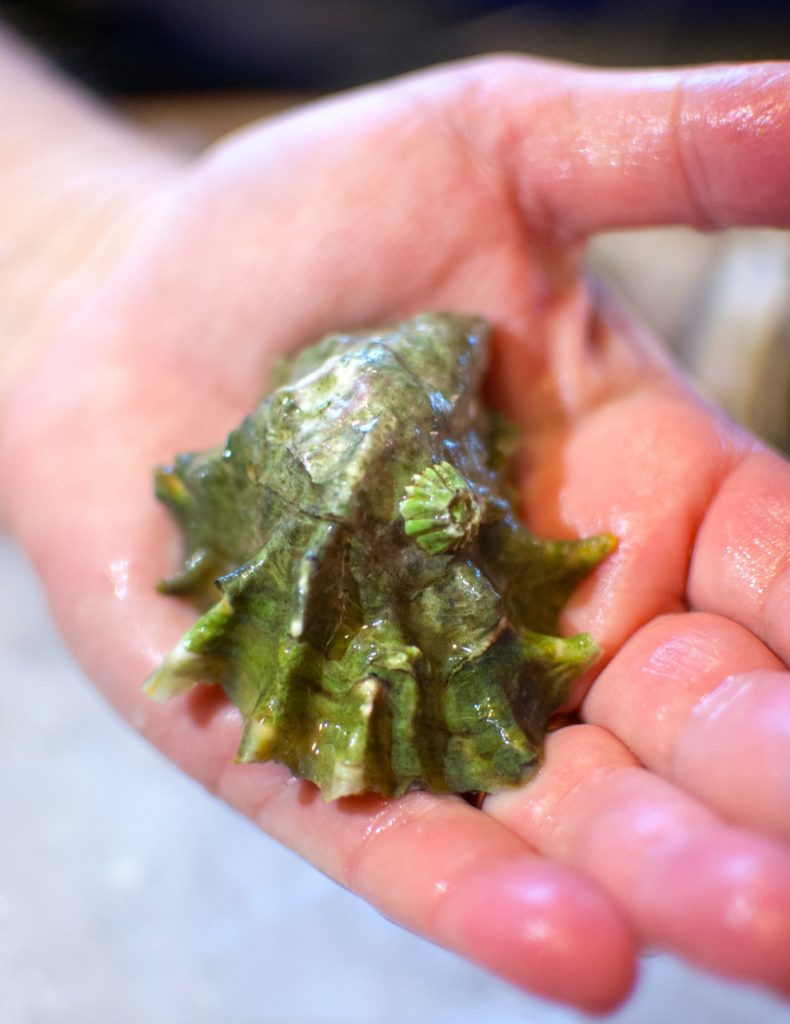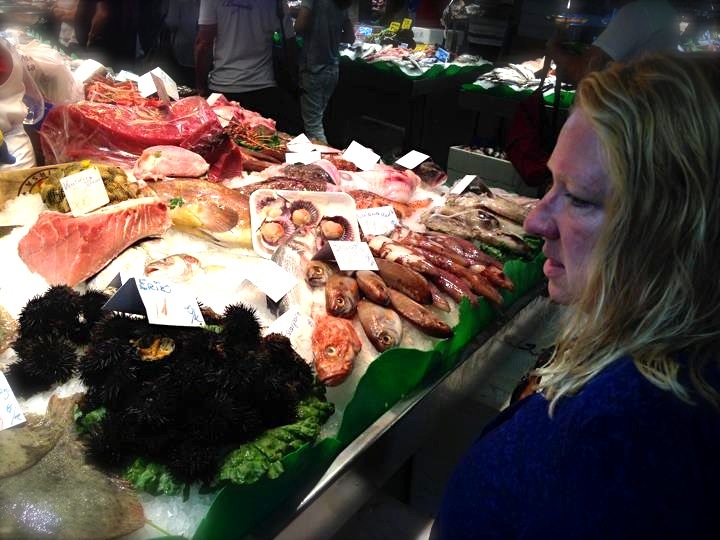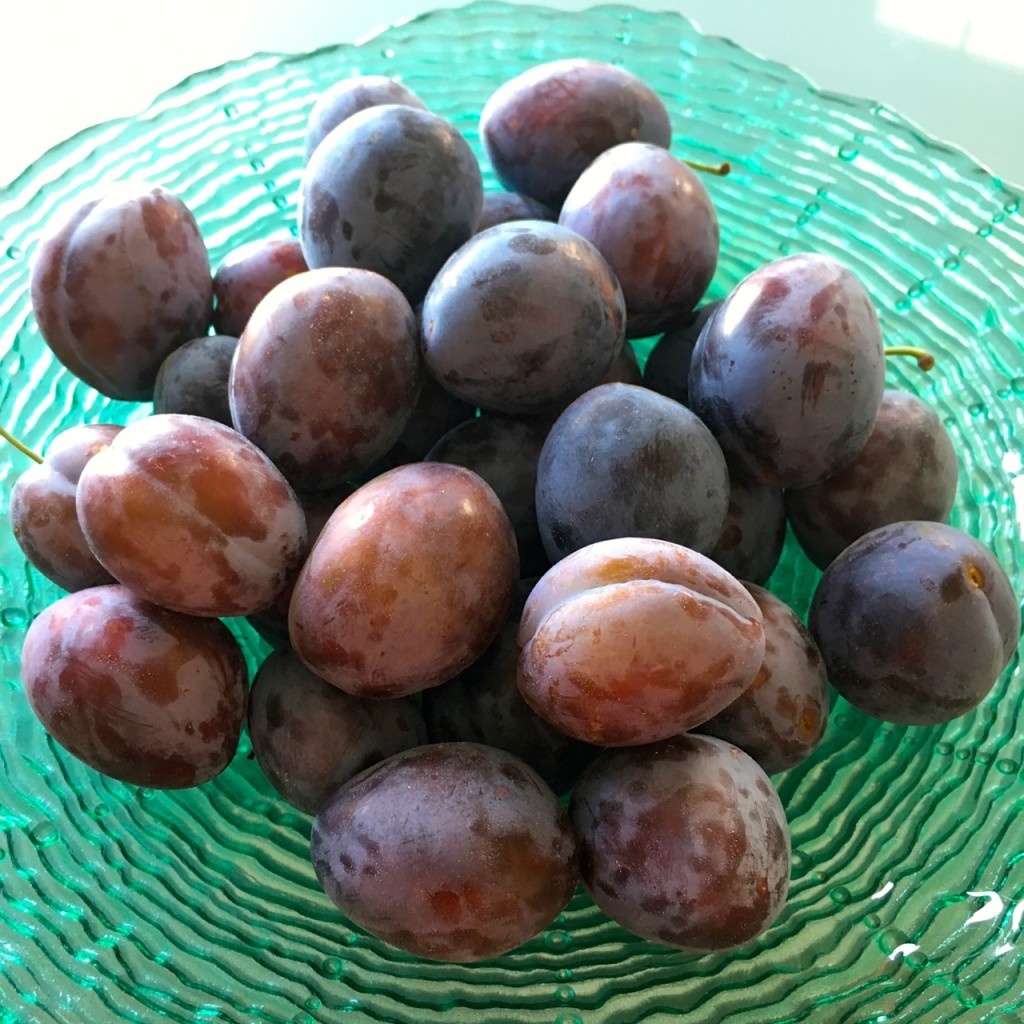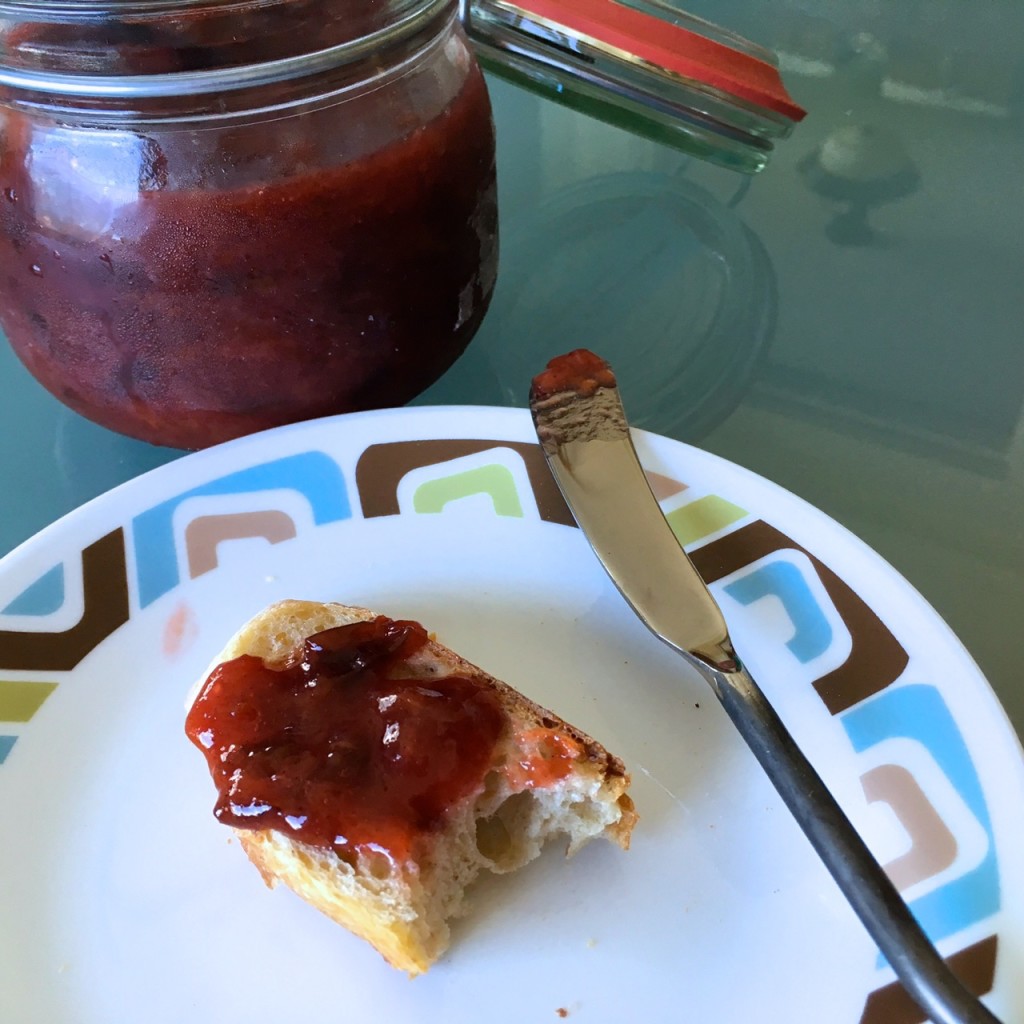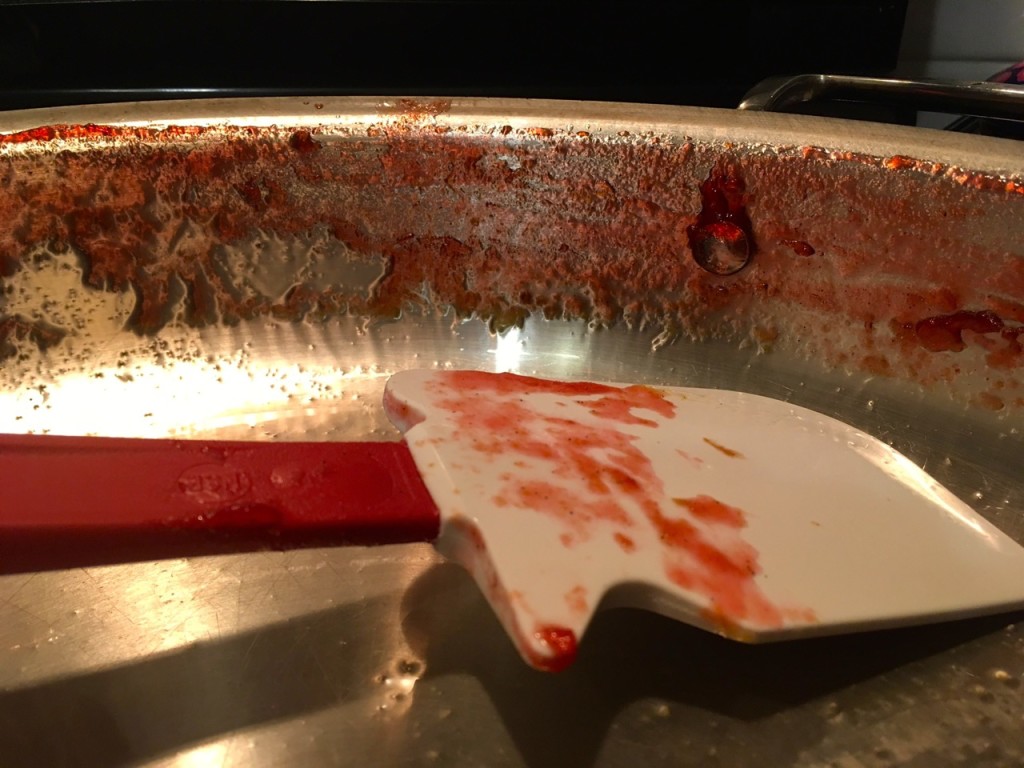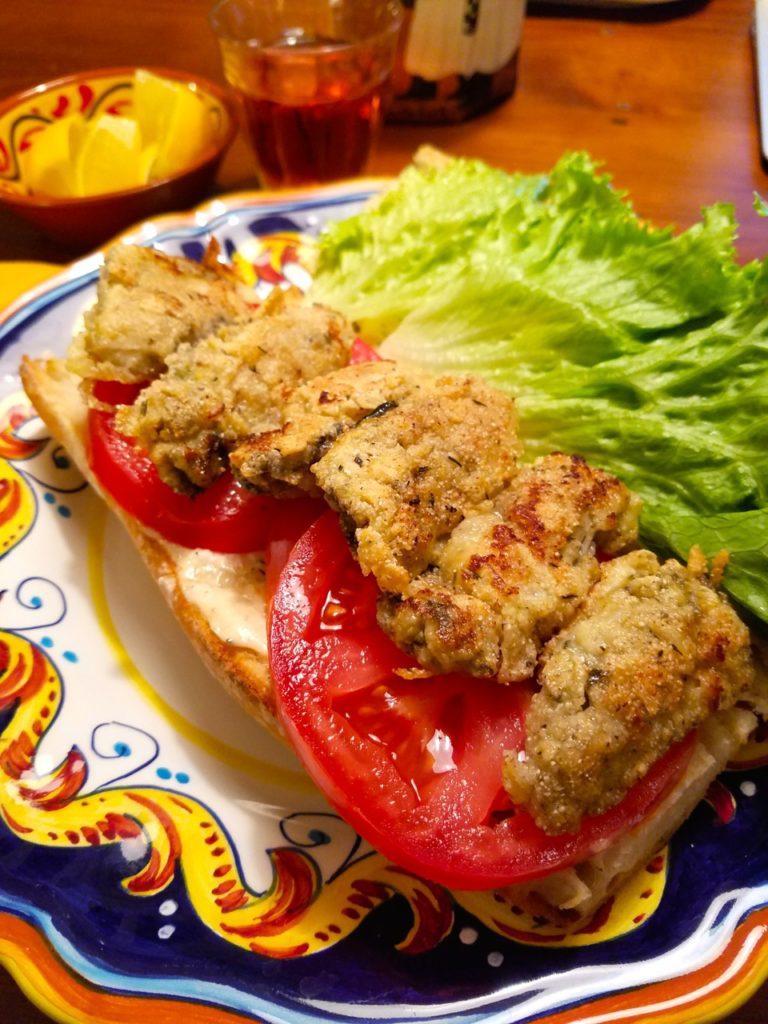 po’ boy!
po’ boy!
After stuffing myself with an array of raw oysters recently, I decided to turn my attention to their cooking possibilities. But what should I make with them, I wondered. Rockefeller? Bienville? Hangtown fry? A stew or chowder?
Our lovely friend Reg grew up here in Seattle, and she said that when she was a child, one of her favorite meals her mother fixed for her was bottled oysters she’d picked up at the seafood counter, dredged in egg and flour, fried and served with saltines. I loved the simplicity of Reg’s good memory and decided that, flush from the thrill of all those lovely raw oysters we’d enjoyed lately, I’d prepare some this way.
So I tried a simple fry, dredging bottled oysters in egg and a half-and-half combo of flour and cornmeal and frying them in a lightly oiled pan until they were golden, about the color(s) of our marmalade tabby, Cosmo.
 Cosmo was kind enough to demonstrate the color to which breaded oysters should be fried.
Cosmo was kind enough to demonstrate the color to which breaded oysters should be fried.
(Photo courtesy of Traca Savadogo, a.k.a. The Cat Whisperer)
I stirred up a mixture of mayo with some spicy seasoning and slathered it onto split French rolls and piled on the fried oysters with lettuce and tomato and made po’ boys. The sandwiches were okay, but Himself and I concluded that what we tasted was bread, spread, oysters, lettuce and tomato—that is, we tasted the individual ingredients but not a blend of flavors. We might have been better satisfied if we’d dipped the fried oysters into the spicy mayo and skipped the bread and vegetation, because they were overpowered by all that competition.
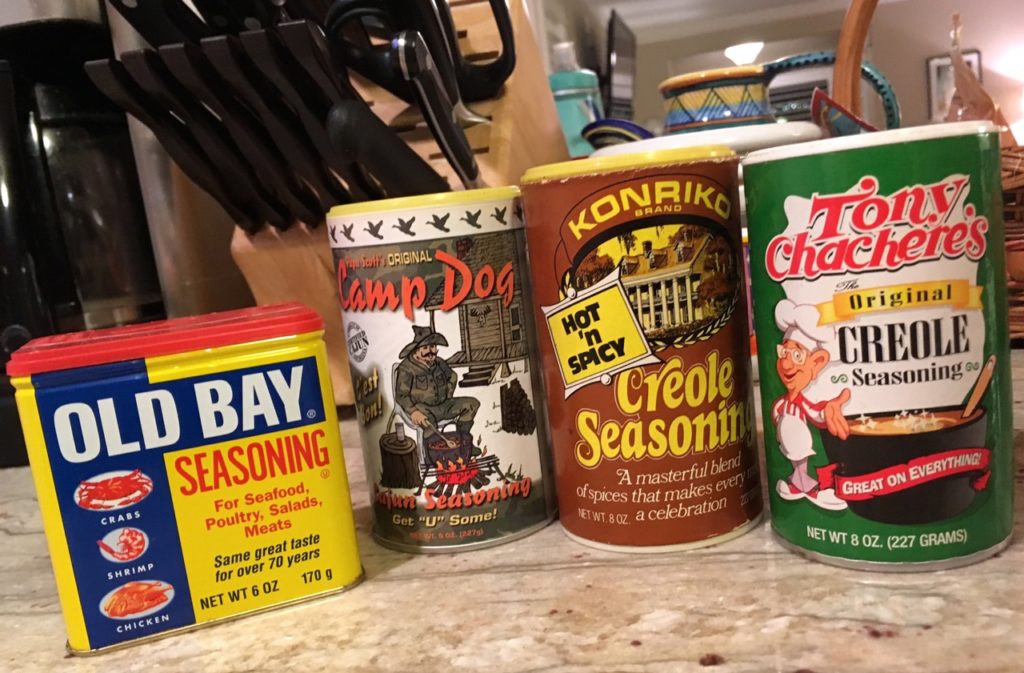 Which seasoning should you use? Whichever one you like. These were what we had on hand. We settled on the Konriko, along with a dusting of cayenne, some dried thyme and a squeeze of lemon.
Which seasoning should you use? Whichever one you like. These were what we had on hand. We settled on the Konriko, along with a dusting of cayenne, some dried thyme and a squeeze of lemon.
A few days later I decided to take another stab at cooking oysters and hit upon an amazing roasted oyster dish. If you decide to make this dish—and you should, because it’s fabulous!—note that the ingredient list doesn’t include the ingredients for the sauce. Be sure when you’re making up your grocery list to read all the way through and take note of those (Himself gallantly dashed out into the chilly Seattle evening to fetch some whipping cream for me.). And prepare the dish according to its basic components—prep the oysters, the spinach topping, the sauce and the cheese. Then it’s a snap to put the components together and bake the dish.
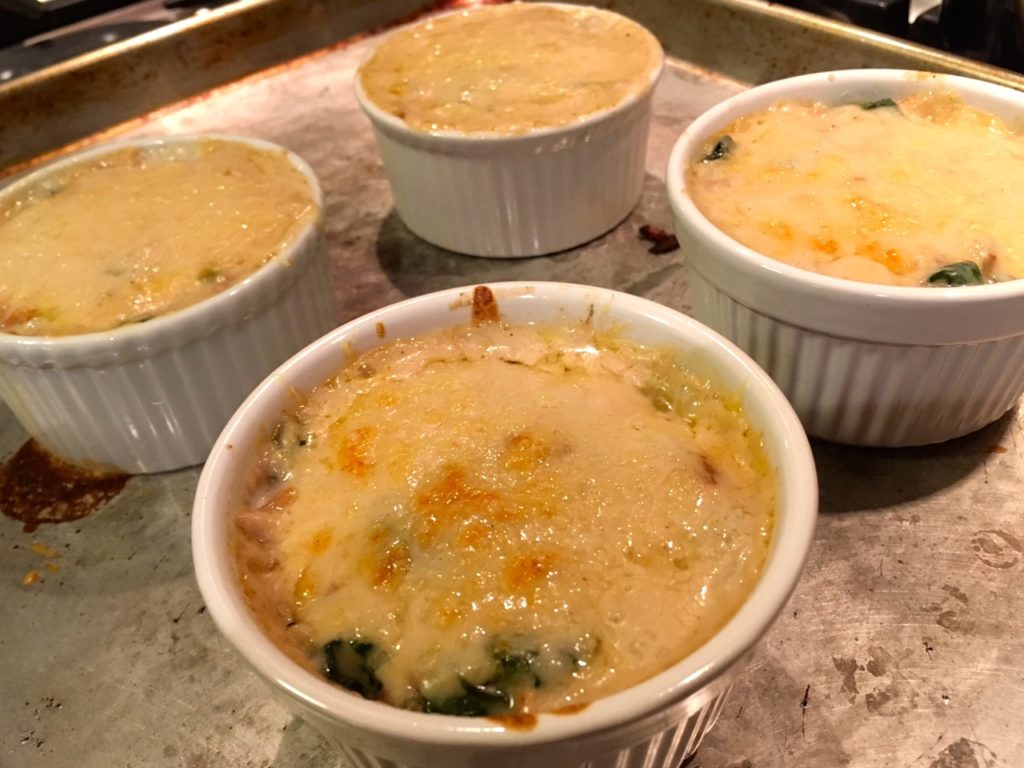 roasted oysters under a bed of bacon & spinach, topped with a creamy sauce
roasted oysters under a bed of bacon & spinach, topped with a creamy sauce
We enjoyed this dish with a mound of baguette slices to scoop up the sauce and soak up the juices. To accompany it we drank pinot gris, from which we’d removed a splash for making the sauce. The flavors meld beautifully in this dish, so this recipe is definitely a keeper.
The first time I recall eating oysters was many years ago at a Thanksgiving feast in New Orleans. The stuffing was filled with fried oysters, and I wasn’t quite sure what to make of them—there was so much else in the stuffing. And it was my first trip to New Orleans, so I was already overwhelmed and suffering from sensory overload. All these years later, I’m happy to report that I’ve learned a thing or two about how to handle oysters. Himself and I concur that we prefer our oysters raw. But it’s nice to know how to treat them when the heat is on!

